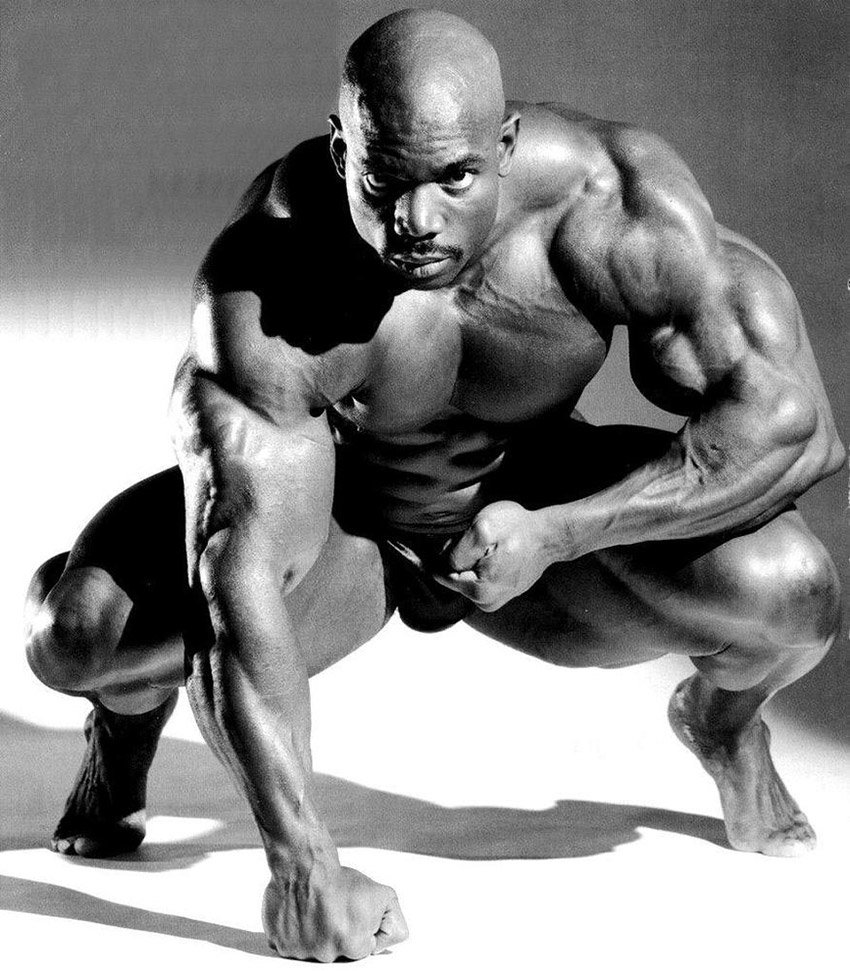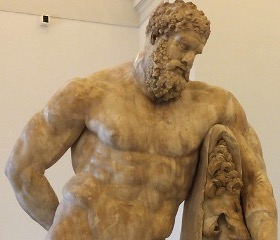
Proportionality and Measurements
Back in the day, the tape measure was a transformational tool
How did this guy NOT win an Olympia??! Experts agree that at his peak, Ken “Flex” Wheeler (above) was the most symmetrical bodybuilder of all time. His career unfortunately paralleled and was overshadowed by that of Mass Monster Dorian Yates. I thought it a damn shame that Flex never won the Mr. Olympia. When Dorian tore his bicep, I felt it disfigured his arm to a visible degree and that Flex should have won at least one Olympia.
“Constant exaggeration is a bandit that has stolen something priceless from you.”
For decades, the simple cloth tape measure was a tool used regularly, repeatedly, and weekly by iron trainees, bodybuilders, strength athletes and lifters. The cloth tape measure was used to measure the size of body parts, a report card that told you whether your training was working or if you were treading water or going backwards.
For eons, the only three monitoring tools available for uber-serious weight-trained athletes were the bathroom scale, the mirror, and the tape measure. The bathroom scales of that primal era were coarse and inaccurate, rotary scales were always off three to five pounds. Mirrors could be manipulated with light to make you look better or worse than what you were. The tape measure, used accurately, was a productive tool. Naturally, the tape measure was used incorrectly and inaccurately.
The great John McCallum wrote an influential article in the October 1965 issue of Strength & Health magazine that addressed the use and misuse of the tape measure. He summed up the dilemma in his eloquent muscle-head way…
“Do you know the childish game bodybuilders play? This consists of pumping up the arms with lots of exercise, then passing a loose tape measure loosely around the pumped arm, add 5% for luck and in a loud clear voice proclaim the glad tidings that they too, have a 19-inch arm. They mitigate their fraud, if it bothers them at all, with the sad but undeniable fact that everyone else is doing the same thing.
“This is bad practice. Constant exaggeration is a bandit that has stolen something priceless from you. Honest measurements should be a source of guidance and encouragement. Honest measurements represent something tangible, something concrete. Accurate measurements obtained from top bodybuilders would be of inestimable value for the rest of us. Unfortunately, honest measurements are as rare as a herd of Dodo birds. You doubt this? Take a tape measure to a major physique contest. Ask the winner if you can measure him for publication. Your request will be met with the same aversion reserved for tax forms and ransom notes.”
McCallum offered a solution and some realistic guidelines. He informed us that there were symmetrical benchmarks, idealized proportional relationships between body parts. Which leads to the deeper question: what is the physical ideal? Many would push for Michelangelo light-boned David as the physical ideal. Most alpha males prefer the thicker, bigger, stronger, linebacker-like Farnese Hercules. The Farnese Hercules is fully-grown man, an older, thicker, more mature man. Denser, far larger, yet just as lean as lithe David.

The first step in determining your ideal proportions is to determine your wrist size. The wrist is the core measurement, and all subsequent body part ideals are based on wrist size: are you light boned, medium or heavy boned?
Check the cloth measure used against a steel ruler to determine its accuracy. The wrist is measured with a straight arm and a relaxed open hand: the tape is passed snuggly (not too tight, not too loose) around the wrist right below the wrist-hand pivot point.
Light boned men have wrists 7-inches (or less,) medium boned is from 7.5 inches up to 8-inches. Heavy boned individuals will have an 8-inch (or larger wrist.) McCallum went to the trouble to work up a chart that generated optimal body part size based on wrist size.
| Wrist | Up to 7-inches | Up to 7.5" | Up to 8" |
| Chest | 45.5" | 48.8" | 52" |
| Waist | 31.8" | 34.1" | 36.4" |
| Arm | 16.4" | 17.6" | 18.8" |
| Forearm | 13.2" | 14.1" | 15" |
| Hips | 38.7" | 41.4" | 44.2" |
| Thighs | 24.1" | 25.8" | 27.6" |
| Calves | 15.5" | 16.6" | 17.7" |
| Neck | 16.9" | 18" | 19.2" |
At one time, all trainees thought in these terms, i.e., everyone measured body parts and kept track of measurements and sought to improve them. Logged in the little spiral notebooks’ trainers carried in their gym bags, measurements were notated and continually updated. Bodyweight and body measurements were SOP.
Over the past 20 years, despite training innumerable athletes and fielding thousands of training queries, I have not once been quizzed or asked about taping or measurements. There was a time when every iron trainer measured body parts all the time. Is measuring body parts with a tape passe? Honest measuring used to be an assumed part of the Iron Athlete’s monitoring system.
If you are seeking to add lean muscle mass, a tape measuring of the waist tells you if your bulk building efforts are flawed: what is the sense of adding 15-pounds of bodyweight in an effort to increase your arm size one inch, if in the process your waist size increases three inches? You are adding fat, not muscle, and an accurate taping would hip you to that sad fact.
A tape measure, like a mirror, can be easily manipulated. Want to instantly increase your arm size ½ inch? Tape the arm using a slight angle. Want your waist size to go down a full two inches? Inhale ever so slightly as you pass the tape around your belly-button meridian.
One humorous taping incident took place in 1966 and shows how popular taping was at the time. The most famous Olympic weightlifting gym in history was the York Barbell Club. Located in York, Pa., the gym was populated to near exclusion by the top Olympic weightlifters in the country; this was not a bodybuilding gym, though bodybuilders would on occasion drop by to train. The York gym had a well-used communal cloth tape that lay next to the chalk box for anyone that wanted to take a body accessing tape measurement. It got a lot of use.
Troublemaker Bill Starr went to the time to measure the gym tape measure and found that over time it had shrunk a quarter inch from sweat and usage. Thus, if a man had a true 17-inch arm, the gym tape registered 17.25 inches. Starr then went to the trouble to stretch the tape so that anyone measuring a body part would lose a full inch, great if you were measuring your waist, tragic if measuring arms.
Starr then positioned himself where he could watch the individual reactions. He watched as, over the course of a three-hour training session, a half dozen men grabbed the cloth tape to measure their arms. Every arm measurer lost a full inch of arm size. The reactions were predictable: the arm measurers would measure, experience the initial shock, remeasure, remeasure again and again, until finally, deflated and depressed, they would wander away, dazed and confused.
A then current AAU Mr. America happened to be visiting that day and, on a whim, he casually measured his arm size. He almost fainted. After determining that his arms had shrunk a full inch, he immediately embarked on a two-hour arm pumping workout wherein every 15-minutes he would measure and remeasure. Starr finally fessed up. NONE of the victims saw the humor in it. I haven’t seen a tape measure in a commercial gym for 40 years.
A great case can be made for intelligent taping of body parts. Assuming the taping is correct, accurate, consistent and uses an honest tape honestly. If you are leaning out, or seeking to add lean muscle mass, why not tape the waist once a week? If you want to increase your arm size, tape to determine if the arm-building routine you are using is working. Honest measurements taken on a regular basis can used to as a report card on our training efforts. Cheap and super effective if used right. Why not add the simple cloth tape to your arsenal of transformational tools?
About the Author
As an athlete Marty Gallagher is a national and world champion in Olympic lifting and powerlifting. He was a world champion team coach in 1991 and coached Black's Gym to five national team titles. He's also coached some of the strongest men on the planet including Kirk Karwoski when he completed his world record 1,003 lb. squat. Today he teaches the US Secret Service and Tier 1 Spec Ops on how to maximize their strength in minimal time. As a writer since 1978 he’s written for Powerlifting USA, Milo, Flex Magazine, Muscle & Fitness, Prime Fitness, Washington Post, Dragon Door and now IRON COMPANY. He’s also the author of multiple books including Purposeful Primitive, Strong Medicine, Ed Coan’s book “Coan, The Man, the Myth, the Method" and numerous others. Read the Marty Gallagher biography here.



